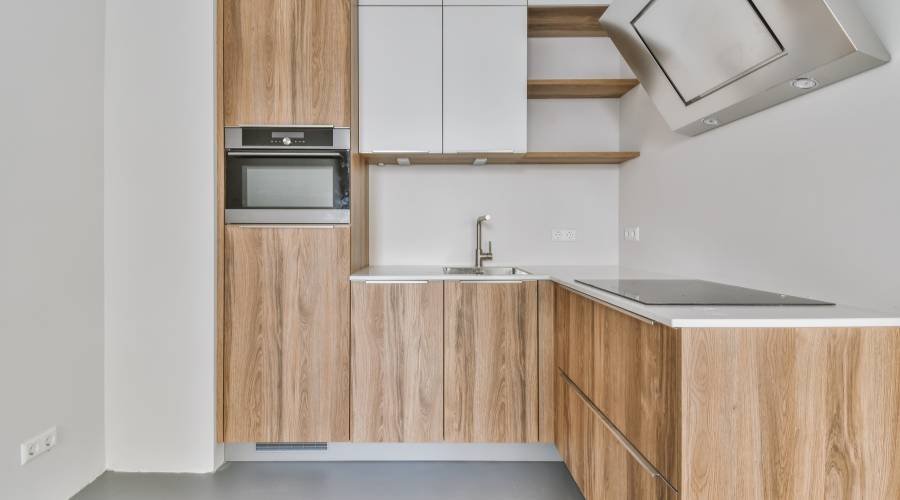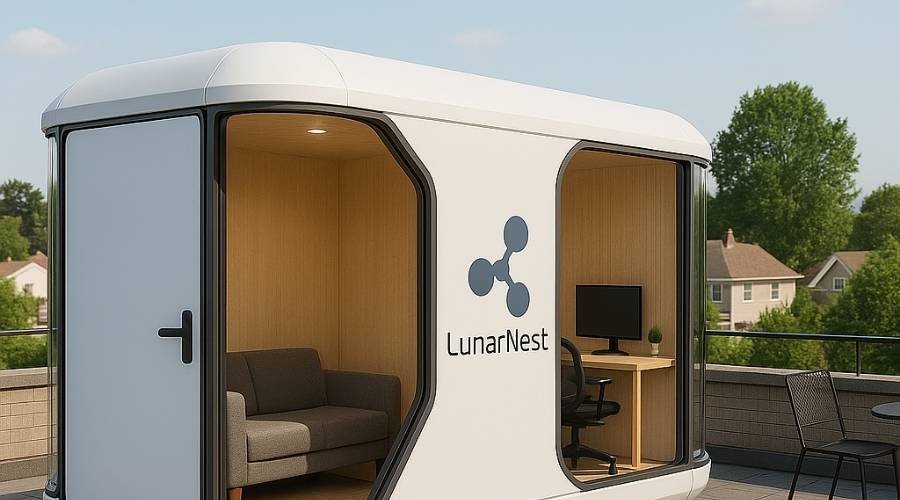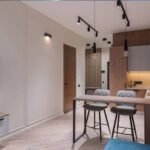Understanding Prefabricated Homes
Prefabricated homes, sometimes known as modular or prefab abodes, are all the rage for folks looking for comfy, private, and easy-on-the-wallet living spaces. Let’s wrap our heads around why these modern dwellings might be just what we need.
Benefits of Prefabricated Homes
Why go prefab over the usual way of building houses? Well, here’s the lowdown on the perks:
| Benefits | Description |
|---|---|
| Quick to Move In | Prefab homes pop up quicker than a jack-in-the-box! Some companies can hook you up with a place in just weeks. |
| Wallet-Friendly | They’re cheaper! With less time on the job site and bulk material deals, there’s more bang for your buck. |
| Kind to Mother Earth | Eco-warriors rejoice! These homes use 45% less stuff and cut waste by over 50%. So you can keep your conscience clear. |
| They Gain Value Fast | Prefab digs often shoot up in value quicker than the regular lot, giving you more bang for your investment buck. |
| Energy Savvy | Lower bills alert! These homes tend to sip energy, not guzzle it, saving cash in the long run. |
Want more info on how to save money with these bad boys? Check out our cheap modular homes.

Types of Building Materials
Prefab homes come with all sorts of material choices, and each brings something to the table. Here’s the scoop on common picks:
| Material Type | Description |
|---|---|
| Wood | It’s light and a breeze to work with. Wood loves to keep heat in and can be sourced from renewable sources. |
| Steel | Tough as nails! Steel stands strong regardless of the weather and speeds up the building process. |
| Concrete | Like a fortress, concrete is fireproof and energy-efficient, demanding almost no upkeep. |
| Eco-Friendly Choices | Feel good about going green with stuff like recycled steel or fast-growing bamboo. Just peek at our green modular homes for more! |
Choosing materials for our prefab pad involves thinking about what works best for us, whether it’s looks, hardiness, or eco-friendliness. If you’re vibing with cutting-edge styles, have a gander at our modern modular homes guide.
Getting clued up on prefab homes uncovers just how these smart shelter solutions can fit into our contemporary AU lifestyle. For more on what’s popping in the prefab world, delve into our page on modular homes AU.
Cost Considerations
Getting the lowdown on the expenses of prefab homes in Australia means we can make smarter choices about where we hang our hats.
Average Cost in AU
Prices for these nifty modular homes aren’t set in stone and can swing quite a bit depending on a few things. You’re looking at shelling out around £75 to £200 per square meter just for the basic bones of a flat pack home. If you want to step into a ready-made palace with your slippers on, then you’re probably talking about £1,500 to £3,000 per square meter. Check out these numbers:
| Type of Cost | Price Range (£ per square meter) |
|---|---|
| Basic Skin | £75 – £200 |
| Finished Home | £1,500 – £3,000 |
These figures often mean prefab homes are a pocket-friendly option than the traditional brick-and-mortar ones. Assembling them is usually quicker and less likely to be derailed by the typical Australian weather, since a lot of the magic happens in a nice, dry factory.
Factors Affecting Cost
What’s behind those price tags on our cozy prefab homes? Well, here are some things to chew on:
- Building Materials: Prices play peekaboo depending on whether we use timber, those fancy insulated panels, or swanky oak frames. Spoiler alert: Oak frames look smashing but come at a premium.
- Design Complexity: Want a house with all the trimmings? The more bells and whistles, the heftier the price tag, thanks to materials and time.
- Site Preparation: If a site needs a lot of TLC before building, that tab can get higher than a kite.
- Additional Features: Adding luxury touches can turn a modest home into a mini-Buckingham Palace—just brace for the cost boost.
- Labour Costs: Labour costs depend on where you are and who’s available. It’s like getting concert tickets, prices vary.
Keeping all these in mind helps us get a grip on how prefab homes tick. We’re not limited to just one or two styles either; we’ve got a range to suit various tastes and budgets. For more affordable choices, take a look at affordable modular homes or modern modular homes. If going green tickles your fancy, check out our eco-friendly modular homes for some guilt-free luxury.
Construction Process
Building our dream prefab homes in Australia brings up a couple of paths: doing it all ourselves or calling in the pros. Each has its perks and pitfalls that we should mull over.
DIY vs Professional Construction
Going the DIY route might catch your fancy since it can shave down costs. Many of us can tackle parts like assembly and sprucing up the interiors. But when it comes to things like plumbing, gas, or electrical magic, ringing up a pro might be the smarter call. Those systems need someone who knows more than just the basics.
| Aspect | DIY Approach | Professional Construction |
|---|---|---|
| Wallet Impact | Tends to be cheaper upfront | Costs more at first, but could dodge future headaches |
| Control Level | You’re the boss of design and timing | The contractor’s schedule dictates the flow |
| Skills Needed | A mixed bag; patience and knowledge are your friends | They bring the know-how and safety checks |
| Speed | It could drag on longer | Likely faster, thanks to their experience |
| Quality Check | Depends on what you can pull off | Polished and pro-level finish |
Modern flat pack homes bring a sleek style while slicing costs compared to traditional setups. Planning’s the key, no matter if you’re rolling up your sleeves or hiring others.
Modular Construction in AU
Modular construction is catching fire in Australia for prefab homes. It’s all about building at a factory and piecing it together on your plot. It’s lighter on your wallet and speeds things up.
- Saves the Pennies: Modular homes can cut down on on-site labour costs since a chunk of the work is done before the parts even leave the factory. Buying in bulk and dodging weather-induced delays also helps your budget.
- Bendable Designs: The cherry on top of modular construction is how easy it is to tweak and add onto the design. Our spaces can morph with our needs. Try getting that kind of change from a stick-built home!
- Planet-Friendly: Making homes in a factory means less waste hits the ground, making it pretty green. If you’re into eco-friendly modular homes, this might be the vibe for you.
With the global modular construction market gearing up to hit big numbers—think USD 140.8 billion by 2029—it’s clear this method isn’t just a flash in the pan. Curious about low-cost options? Jump over to our guide on affordable modular homes.
In a nutshell, whichever route we take—whether we get our hands dirty or call in the cavalry—it’s all about fitting our own needs, wallet constraints, and what tickles our fancy as we gear up to live large in prefabs in AU. For more cool designs, wander over to modern modular homes.

Environmental Impact
When you picture the future of housing, thinking about how it’ll affect the environment is a big deal. Prefab homes, those nifty pre-made structures, offer a more planet-friendly way compared to your regular house-building gig.
Sustainability of Prefabricated Homes
Prefabs cut down on the mess and chaos at your building site and often go hand in hand with eco-friendly materials and smart designs. With these benefits, they’re great for Mother Earth. Plus, they go up faster and produce better energy savings.
A study by Homes England in 2021 found that these modular gems use 45% less stuff than the usual building tricks. That’s a win for conserving resources and taking care of our good old Earth.
| Planet Win | Less by This Much |
|---|---|
| Material Use | 45% Less |
| Waste Buildup | Over 50% |
Choosing prefab homes shows we want our living choices to fit with eco-living vibes.
Energy Efficiency and Waste Reduction
How buildings use energy matters quite a bit when you’re thinking green. Prefab homes usually pack in features that keep them cozy in the winter and chill in the summer, slashing those energy bills.
These homes favour materials designed to save energy and cut down on waste. By being better at using up all their parts, you end up with less leftover junk than with traditional home-building methods. This not only means you’re doing your part for the planet, but you’re also getting more bang for your buck in the long run.
For those into green living, checking out eco-friendly modular homes could be your next smart move. And hey, these prefabricated places often go up in value faster than the old-school kind, which is a sweet bonus.
When you pick a modular home, you’re putting money down on a better future and teaming up with the planet for a brighter tomorrow. Want more on these sharp-design spaces? Take a gander at modern modular homes that mix sustainable smarts with cozy, comfy living.
Historical Evolution
Prefabricated Housing Innovations
Fast forward to the 21st century, and prefabricated homes got a glow-up. We’re talking about designs that scream innovation and building methods that make Mother Earth smile. These days, prefabs are snapping up attention as the eco-friendly answer to good old bricks and mortar. Builders are all about cutting down on waste and keeping it green with energy-saving measures, giving a nod to our planet-conscious times.
Today, modular homes aren’t just a pretty face—they’re smart, too. They’ve got techy touches and savvy designs that save energy and cash. You’ll find eco-friendly insulations and solar panels becoming the norm, cutting those energy bills down to size. It’s no wonder these homes are catching eyes as a cost-friendly snatch.
The buzz around affordable modular homes and modern modular homes is growing, as folks are leaning more toward saving money and the planet. As prefab tech keeps getting better and greener, it’s easy to see why the future of prefab living in Australia is looking bright, offering a fresh take on what home sweet home can be. Check out more on this in our deep dives on eco-friendly modular homes and modular homes AU.






